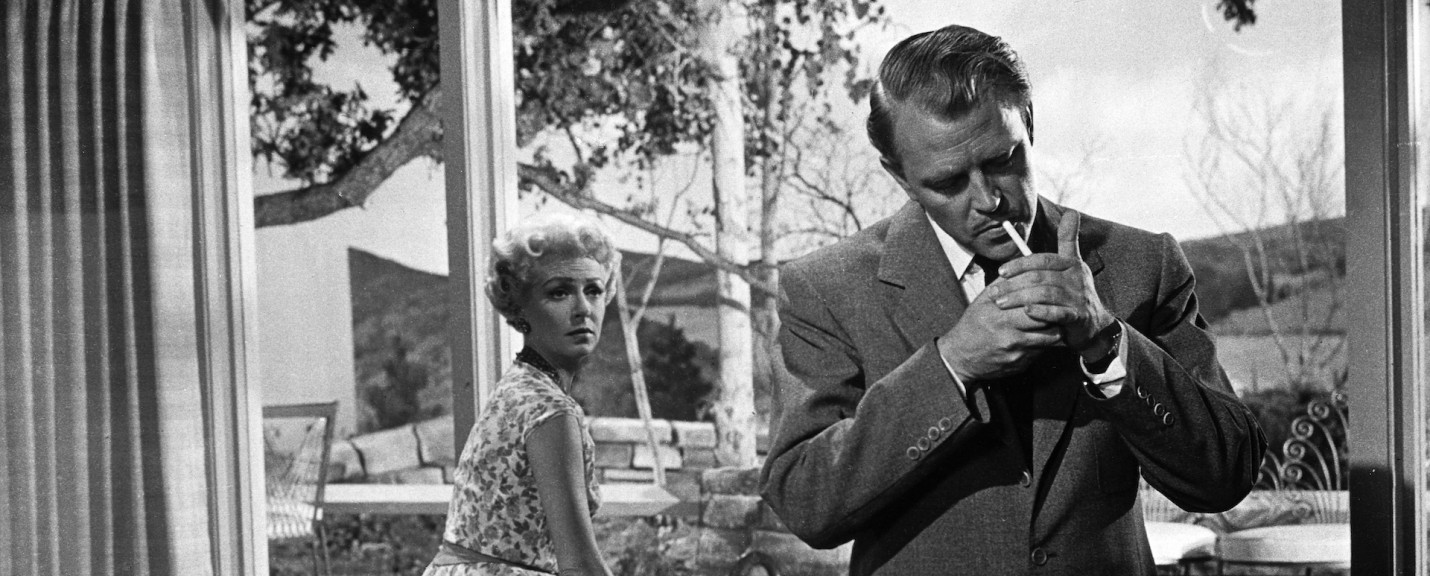Imitation of Life
by Douglas Sirk
Laura Mulvey will be attending
Retrospectives & Focus 2021
Official synopsis
On Coney Island Beach, near New York, Lora Meredith, a young single mother who dreams of becoming an actress, meets Annie Johnson, a homeless black woman who also takes care of her daughter on her own. The two women sympathize and Lora soon offers Annie to stay with her; the latter thus becomes the nanny and the housekeeper. Annie's daughter, Sarah Jane, seems not to stand the color of her skin at a time when it socially excludes her; she is jealous of Susie, Lora's little blonde girl. However, the two children grow up together, like real sisters.
The programmer’s eye
Since they met on Coney Island Beach, Lora Meredith and Annie Johnson have never left each other. These two single mothers face adversity together. Annie takes care of the house while Lora pursues her dream of becoming an actress. The material comfort acquired over the years can't make one forget the existence of a stupid and hostile society. “Imitation of Life” is a success story coupled with a heartbreaking racial and filial drama. Produced in 1959, the film marks the ending of a decade, the work of a filmmaker and a genre. It is the most beautiful requiem that one could offer to "flamboyant melodrama".
— Nathan Reneaud
Biography and Filmography
After a childhood shared between Hamburg and Denmark, Detlef Sierck (his name was then Germanized) studied Human Sciences and then devoted himself to theater. Between 1923 and 1933, he directed a great number of plays in both Bremen and Leipzig. Hired by the UFA in Berlin, he shot some literary adaptations. In 1936, Detlef Sierck freed himself from his theatrical repertoire and directed “Schlussakkord”, a musical melodrama to which Beethoven's Ninth Symphony counterpointed. In 1937, he experienced the greatest successes of his German period: “To New Shores” and “La Habanera”. His style asserted itself, yet Detlef Sierck prefered to flee Nazi Germany and try his luck in the United States. He was noticed by the critics thanks to his first two works, “Hitler's Madman” (1943), in which he denounces the madness of Heydrich, and “Summer Storm” (1944). From then on, the man who called himself Douglas Sirk worked on thrillers with interesting films (“Lured”, 1947; “Sleep, my love”, 1948; “The Lovers”, 1949) and comedy (“Slightly French”, 1949; “Has anyone seen my gal?”, 1952), while making an honorable western (“Taza, Son of Cochise”, 1953) and a strange film about the company of Jesus (“The First Legion”, 1951). In 1953, “All I desire” opened the great cycle of melodramas which imposed the director on French critics. Douglas Sirk liked to adorn his intuitions of American society with an unreal atmosphere, an impression reinforced by the use of garish colors in “Magnificent Obssesion” (1954) and in “All that Heaven Allows” (1955). He treated his favorite genre with a certain distance and implicit irony. His repulsion for reality is perhaps crystallized in “Written on the Wind” (1956), a delirious portrait of a family of Texan billionaires, full of sumptuous images and baroque colors. His lyricism and his sense of fatality are expressed with rare virtuosity in “Pylon” (1957), an adaptation of “Pylon” by William Faulkner, and in “A Time to Love and a Time to Die” (1958), before “Imitation of Life” (1959). Back in Europe, Douglas Sirk directed some short films which can be considered as the quintessence of his work, so unique for its aesthetic refinement. Douglas Sirk retired in Switzerland at the beginning of the 1960s and he resumed theatrical activities in Germany while teaching at the university. (Ciné-Ressources - French Cinémathèque)
Universal International Pictures
Park Circus
by Douglas Sirk
After a childhood shared between Hamburg and Denmark, Detlef Sierck (his name was then Germanized) studied Human Sciences and then devoted himself to theater. Between 1923 and 1933, he directed a great number of plays in both Bremen and Leipzig. Hired by the UFA in Berlin, he shot some literary adaptations. In 1936, Detlef Sierck freed himself from his theatrical repertoire and directed “Schlussakkord”, a musical melodrama to which Beethoven's Ninth Symphony counterpointed. In 1937, he experienced the greatest successes of his German period: “To New Shores” and “La Habanera”. His style asserted itself, yet Detlef Sierck prefered to flee Nazi Germany and try his luck in the United States. He was noticed by the critics thanks to his first two works, “Hitler's Madman” (1943), in which he denounces the madness of Heydrich, and “Summer Storm” (1944). From then on, the man who called himself Douglas Sirk worked on thrillers with interesting films (“Lured”, 1947; “Sleep, my love”, 1948; “The Lovers”, 1949) and comedy (“Slightly French”, 1949; “Has anyone seen my gal?”, 1952), while making an honorable western (“Taza, Son of Cochise”, 1953) and a strange film about the company of Jesus (“The First Legion”, 1951). In 1953, “All I desire” opened the great cycle of melodramas which imposed the director on French critics. Douglas Sirk liked to adorn his intuitions of American society with an unreal atmosphere, an impression reinforced by the use of garish colors in “Magnificent Obssesion” (1954) and in “All that Heaven Allows” (1955). He treated his favorite genre with a certain distance and implicit irony. His repulsion for reality is perhaps crystallized in “Written on the Wind” (1956), a delirious portrait of a family of Texan billionaires, full of sumptuous images and baroque colors. His lyricism and his sense of fatality are expressed with rare virtuosity in “Pylon” (1957), an adaptation of “Pylon” by William Faulkner, and in “A Time to Love and a Time to Die” (1958), before “Imitation of Life” (1959). Back in Europe, Douglas Sirk directed some short films which can be considered as the quintessence of his work, so unique for its aesthetic refinement. Douglas Sirk retired in Switzerland at the beginning of the 1960s and he resumed theatrical activities in Germany while teaching at the university. (Ciné-Ressources - French Cinémathèque)
